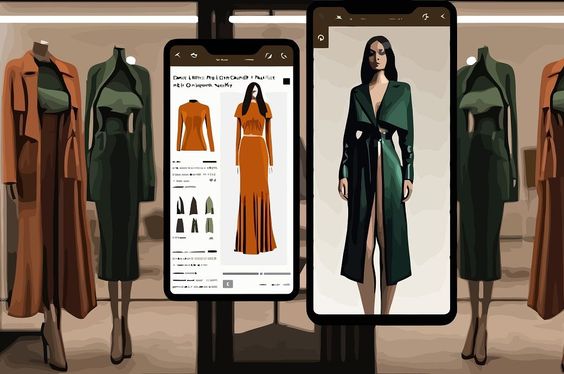How to Become a Fashion Stylist
So, you have a passion for fashion and are curious about turning it into a career. Ever wondered how to become a fashion stylist? This guide will walk you through everything you need to know to get started in this exciting and dynamic field. From understanding the role to building your portfolio and marketing yourself, we’ve got it all covered.
What is a Fashion Stylist?
A fashion stylist is a professional who curates outfits and accessories for clients, ensuring they look their best for various occasions. This could range from personal shopping and wardrobe organization to styling for photoshoots, commercials, and fashion shows. They are the unsung heroes behind those jaw-dropping looks you see in magazines and on the red carpet.
Importance of Fashion Stylists
Fashion stylists play a crucial role in the fashion industry. They help individuals and brands present their best image to the world, which can significantly impact public perception and success. Their expertise in combining different pieces to create a cohesive look is invaluable in an industry that thrives on visual appeal.
Understanding the Role of a Fashion Stylist
Day-to-Day Responsibilities
A typical day for a fashion stylist can be quite varied. It might include meeting with clients to understand their needs, shopping for clothing and accessories, coordinating with photographers and makeup artists, and organizing outfits for events or shoots. Flexibility and adaptability are key, as each day can bring new challenges and opportunities.
Key Skills Required
To be successful as a fashion stylist, certain skills are essential:
- Creativity: The ability to envision and create unique looks.
- Communication: Strong skills to understand and articulate client needs.
- Attention to Detail: Ensuring every element of an outfit is perfect.
- Trend Awareness: Keeping up with the latest fashion trends.
- Organizational Skills: Managing multiple tasks and schedules efficiently.
Also, read about Start a T-Shirt Printing Business
Educational Pathways
Formal Education
While a formal degree isn’t always required, it can be beneficial. Degrees in fashion design, merchandising, or a related field can provide a solid foundation. These programs often cover essential topics like fashion history, textiles, and business management.
Online Courses and Certifications
For those unable to attend a traditional college, online courses and certifications are a great alternative. Platforms like Coursera, Udemy, and Fashion Institute of Technology offer courses specifically tailored to aspiring fashion stylists. These courses can help you build the necessary skills and knowledge at your own pace.
Gaining Experience
Internships and Apprenticeships
Experience is invaluable in this field. Internships and apprenticeships provide hands-on learning opportunities, allowing you to work alongside experienced professionals. This not only builds your skills but also expands your network.
Volunteering Opportunities
Volunteering at local fashion events or with community organizations can also provide valuable experience. It’s a great way to get your foot in the door and demonstrate your commitment to the industry.
Building Your Portfolio
Importance of a Portfolio
A strong portfolio is essential for showcasing your work and attracting clients. It should highlight your best styling projects and demonstrate your versatility and creativity.
Tips for Creating a Strong Portfolio
- High-Quality Photos: Invest in professional photography to capture your work.
- Diverse Looks: Show a range of styles to appeal to different clients.
- Consistency: Ensure your portfolio has a cohesive look and feel.
- Regular Updates: Keep your portfolio updated with your latest projects.
Networking in the Fashion Industry
Attending Fashion Events
Fashion events are prime opportunities for networking. Attend fashion shows, trade shows, and industry conferences to meet potential clients and collaborators. Networking can open doors to new opportunities and help you stay informed about industry trends.
Using Social Media for Networking
Platforms like Instagram and LinkedIn are powerful tools for connecting with others in the fashion industry. Engage with other professionals, share your work, and stay active in relevant groups and discussions. Discover more information dynamichub.ca

Finding Your Niche
Identifying Your Style
Finding your unique style and niche is crucial in standing out as a fashion stylist. Whether it’s vintage fashion, high-end luxury, or streetwear, identifying your specialty can help attract the right clients.
Specializing in a Fashion Segment
Specializing in a particular fashion segment can also set you apart. This could include bridal styling, editorial styling, or celebrity styling. Specialization allows you to hone your skills and become an expert in your chosen area.
Staying Updated with Trends
Following Fashion Magazines and Blogs
Keeping up with the latest trends is vital. Regularly read fashion magazines, blogs, and online publications. This not only keeps you informed but also provides inspiration for your work.
Attending Fashion Shows
Attending fashion shows is another excellent way to stay updated with trends. These events showcase the latest designs and can provide insight into upcoming styles and colors.
Developing Personal Branding
Importance of Personal Branding
In the competitive world of fashion, personal branding is essential. Your brand represents who you are and what you stand for. A strong personal brand can attract clients and differentiate you from other stylists.
Steps to Build Your Brand
- Create a Professional Website: Showcase your portfolio and services.
- Consistent Social Media Presence: Regularly post content that reflects your brand.
- Engage with Your Audience: Respond to comments and messages to build relationships.
- Collaborate with Influencers: Partner with influencers to reach a broader audience.
Setting Up Your Business
Freelancing vs. Working with an Agency
Decide whether you want to freelance or work with an agency. Freelancing offers more flexibility, while an agency can provide stability and access to a broader client base. Consider your personal preferences and career goals when making this decision.
Legal Considerations
Setting up your business involves some legal considerations. Register your business, obtain necessary licenses, and consider insurance to protect yourself and your clients.
Marketing Yourself
Effective Marketing Strategies
Effective marketing is crucial for attracting clients. Use a combination of online and offline strategies to reach your target audience. This could include social media marketing, attending networking events, and leveraging word-of-mouth referrals.
Utilizing Social Media
Social media platforms like Instagram, Facebook, and Pinterest are ideal for showcasing your work. Use these platforms to share your styling projects, engage with followers, and attract potential clients.
Client Management
Building Strong Relationships with Clients
Building and maintaining strong relationships with clients is key to your success. Communicate clearly, understand their needs, and go the extra mile to exceed their expectations. Happy clients are likely to refer you to others and provide repeat business.
Understanding Client Needs
Each client is unique, and understanding their individual needs is crucial. Listen to their preferences, offer personalized advice, and be adaptable to their feedback. This will help you create looks that they love and build a loyal client base.
Challenges in the Industry
Common Challenges Faced by Fashion Stylists
Like any career, being a fashion stylist comes with its challenges. These might include dealing with difficult clients, staying relevant in a fast-paced industry, and managing irregular income.
Tips for Overcoming These Challenges
- Stay Organized: Use tools and systems to manage your tasks and schedule.
- Continue Learning: Stay updated with the latest trends and techniques.
- Seek Support: Join industry groups or find a mentor for guidance.

Growth and Career Advancement
Continuous Learning and Improvement
The fashion industry is ever-evolving, and continuous learning is essential. Attend workshops, take advanced courses, and always look for ways to improve your skills.
Seeking Mentorship and Guidance
Having a mentor can provide valuable insights and advice. Seek out experienced professionals who can offer guidance and help you navigate your career path.
Conclusion
Becoming a fashion stylist is a rewarding career that combines creativity, passion, and hard work. By following the steps outlined in this guide, you can build a successful career in the fashion industry. Remember to stay true to your style, keep learning, and never give up on your dreams.
FAQs
How long does it take to become a fashion stylist?
The time it takes to become a fashion stylist varies. It depends on factors like education, gaining experience, and building a portfolio. On average, it can take anywhere from 2 to 5 years.
What is the average salary of a fashion stylist?
The average salary of a fashion stylist varies widely based on experience, location, and clientele. It can range from $25,000 to over $100,000 annually.
Do I need to move to a big city to be successful?
While big cities offer more opportunities, it’s not a necessity. With the rise of digital platforms, you can build a successful career from almost anywhere.
Can I be a fashion stylist without a degree?
Yes, a degree is not always required. Many successful fashion stylists have built their careers through experience, networking, and self-education.
How do I get my first client as a fashion stylist?
Start by offering your services to friends and family, volunteering at fashion events, or collaborating with local photographers and designers. Building a strong portfolio and networking can help attract your first clients.



